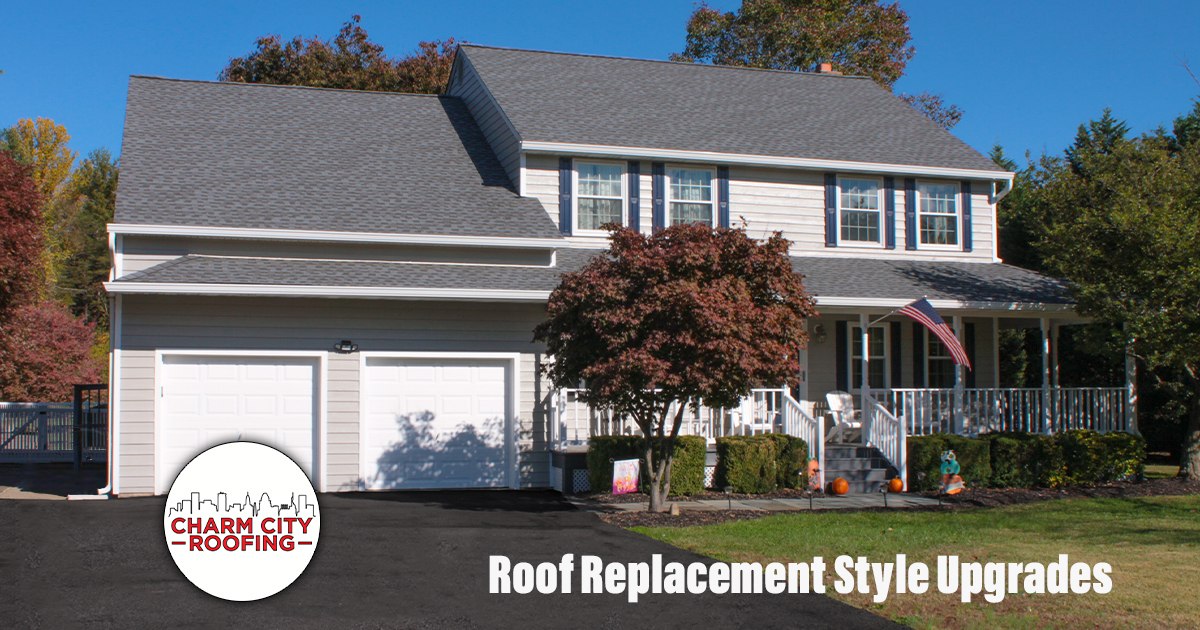
Summer Roof Care
Summer Is Here– Keep Your Roof In Mind!
Vacation season is coming in hot, and homeowners everywhere are dusting off their grills and turning up their air conditioners. This time of year, roofs are the last thing on most people’s mind. However, there are special considerations homeowners must take in mind during the hotter months for proper summer roof care.
From surface shingles right down to the substructure of the roof, the summer heat has far-reaching effects on house-toppers everywhere. If you’re one of the 80% of Americans with an asphalt roof, the heat will have an especially potent effect. What’s more, in humid climates like Maryland, the additional moisture in the air will play a role in your roof’s health.
Not to worry! The issues warm weather creates for roofs are easy to identify, and for most there’s no need to check more than once or twice in a season. With a little bit of education, you can ensure your roof is handling the heat and get right back to grilling in the yard.
Summer Roof Care Basics: What to look out for
The signs of heat related roof issues vary widely depending on what kind of existing damage is present. To be safe, it’s best to do a cursory check of every component to ensure your roof’s overall health.
Cracked Shingles
When asphalt shingles are new, they’re quite flexible. Over time, however, shingles tend to lose their pliability and become brittle, like a stale chip. This effect is accelerated in the hotter months, with the sun baking moisture out of asphalt shingles more quickly.
Shingles also shrink and warp as they dry out, causing them to become less effective at covering the lower parts of your roof. In some cases, warping can cause nails to come loose or rip free. Missing nails are the perfect place for water to enter your roofing substrate, causing leaks and water damage.
It’s good to check your shingle health at the beginning and end of the summer. Look for asphalt granules or pieces in your gutters, as that’s a sure sign of damage higher on the roof. In the worst cases, you may notice a gaping hole where a shingle used to be. If that’s the case, call a contractor as soon as possible!
Blistering Shingles
Not all shingles crack as they age. Some blister instead.
Asphalt shingles aren’t pure asphalt. They’re a composite of many different materials, specifically combined to add strength, reflectivity, and flexibility to your outermost roofing layer. In high-heat environments, some of these mixed-in components can flash out of the asphalt. This leaves a dark pockmark on the shingle, and shortens the lifespan of your roof as a whole. What’s worse, blistering usually takes place in the first year or two of a roof’s life!
Luckily, blisters won’t typically result in a leak. Shingles are made up of two separate layers, so the odds of a blister making a hole all the way through are low. Still, blister damage limits how effective your shingles can be, and will take an aesthetic toll on your roof over time. Typically, good attic ventilation will cure a blistering problem, keeping the roof cool and intact.
Shingle softening
Wait a minute, didn’t we just say the sun makes shingles brittle? Well, over time, it does. The sun will eventually dry out your shingles, making them susceptible to breaking. In the short term, though, heat softens asphalt shingles, leaving them brittle once they cool. However, this short-term softening can be just as important for homeowners to understand.
On hot days, roofs can reach temperatures higher than 160 degrees Fahrenheit. Under such extreme heat, shingles become quite soft, making them susceptible to damage. Before the dog days of summer hit, take the time to trim back any branches that are encroaching on your roof. Something as small as a tree branch blowing in the wind can cause extensive damage to hot, soft shingles. Additionally, stay off the roof when it’s at its hottest. A carelessly placed foot can do just as much damage to soft shingles as a falling branch.
Mold and algae growth
Mold and algae thrive in the heat. This has mostly to do with the extra humidity in the air, which accumulates in attics. This moisture feeds algae growth on top of the roof, as well as mold growth in the wooden supports below.
Over time, algae will cause your shingles to deteriorate and fail. Luckily, a simple wash is usually all it takes to rid a home of algae growth.
Mold will compromise the structural components of your roof, weakening the wood and accelerating the rotting process. What’s more, some varieties of mold produce toxic spores that can have health effects on the people living in your home.
All forms of growth will be more active in the summer, so check your attic and roof top about once a month to make sure no unwanted flora is taking hold. If you do discover mold or algae, a good contractor will be able to tell you what your next steps should be.
The Bottom Line on Summer Roof Care
The wonders of summer come with a dark side, unfortunately. There’s plenty of ways in which the warmer weather can wreak havoc on your roofing system. However, simply knowing what to look for can go a long way towards keeping your roof happy all summer long. If you have any questions, don’t hesitate to reach out to your local roofer to get an expert opinion!



